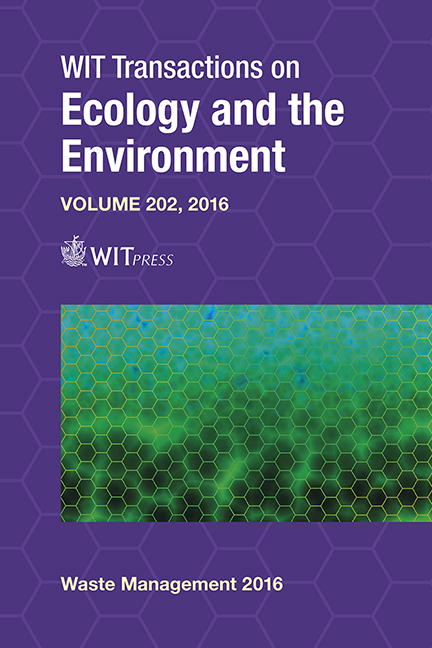How We Transform Industrial Organic Waste Into Vermicompost And Champion Environmental Sustainability
Price
Free (open access)
Transaction
Volume
202
Pages
13
Page Range
147 - 159
Published
2016
Size
313 kb
Paper DOI
10.2495/WM160141
Copyright
WIT Press
Author(s)
M. Quintern, M. Morley, B. Seaton, R. Hamilton
Abstract
The traditional means of disposing of processing waste to landfill is receiving close scrutiny due to high capex and opex costs and negative environmental impacts. Increasingly stringent legislation means communities and industries are seeking the security of alternative solutions when planning their long-term organic waste disposal strategies. Important to these are excellence in environmental performance, ecological sustainability and to cost effectiveness. Vermicomposting technologies achieve this through the conversion of wet organic waste to a nutrient rich, safe fertiliser for sustainable land utilisation. Vermicomposting is highly cost effective for industrial and municipal organic waste streams. MyNOKE is currently vermicomposting 30,000 tonnes per year of co-decanter dewatered waste activated sludge (WAS) and dissolved air flotation (DAF) sludge from Fonterra milk processing plants in New Zealand. The sludge is blended with 50,000 tonnes of several pulp and paper mill sludge’s from Oji Fibre Solutions Paper Mills for vermicomposting. The product, some 20,000 tonnes of vermicast, is land applied to dairy pasture and maize land. As a result, productivity, soil water efficiency, and nutrient uptake are increased. Plant available water holding capacity, root density, and root depth reduces the risk for nitrate nutrient leaching when applied as effluent or mineral fertiliser. The new vermicomposting operation is integrated into a Fonterra owned 1,600 ha farm. The Noke vermicomposting process developed by Quintern has grown from vermicomposting 2,000 tonnes of sludge in 2008 to 200,000 tonnes in 2015.
Keywords
vermicomposting, pulpmill solids, milk sludge, land utilisation





